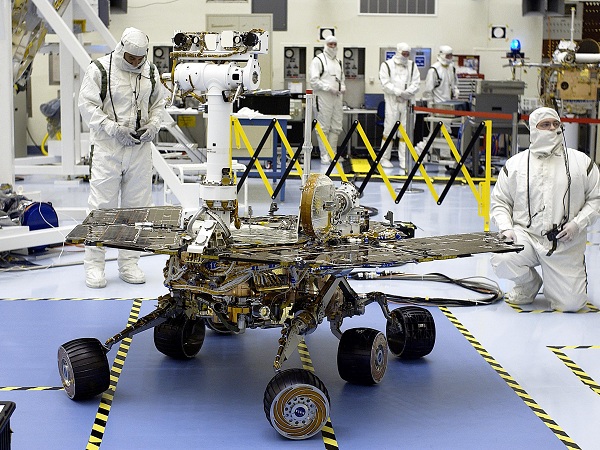Mars Rover Has 'Amnesia' With Worn Out NAND Memory
It seems that one of the Mars Rover Opportunity's NAND memory banks has been worn out, giving the rover Amnesia.
Today we have some strange news for you: someone's SSD broke. Don't worry, we're not writing about your neighbor who managed to snap one in half, but rather about NASA's SSD. More specifically, the memory of the Mars Rover Opportunity.
When the Opportunity was deployed, what it had inside wasn't called an SSD – just "non-volatile flash memory" (which is exactly what an SSD is anyway). Now, after a decade of service, the researchers controlling the rover have pinpointed the source of its strange behavior. Namely, some of the NAND memory has gone bust after all these write cycles.
As you may know, non-volatile NAND memory has a limited number of write cycles that it can endure before it becomes worn out and won't store data properly anymore. Of the seven memory banks on the flash in the Rover, the seventh has issues.
The effect has been that the Mars Rover keeps trying to write data to the bank, but because of the way it's programmed, when it fails to write to it a certain number of times, it reboots. As a result, all the data that the rover had gathered into its RAM memory until that time hasn't been saved, making it a rather large pain to collect data effectively. The NASA staff calls this "amnesia," because the Rover keeps forgetting everything it has just done.
The solution to this problem is simply a software patch that stops the rover from using the seventh memory bank. After that, though, it's just a matter of time before another memory bank goes bad, or something else. Hopefully, NASA has included some kind of wear leveling algorithm with the software.
Follow Niels Broekhuijsen @NBroekhuijsen. Follow us @tomshardware, on Facebook and on Google+.
Get Tom's Hardware's best news and in-depth reviews, straight to your inbox.
Niels Broekhuijsen is a Contributing Writer for Tom's Hardware US. He reviews cases, water cooling and pc builds.
-
yumri well over the years NAND Flash doesgo bad just good to know it is more like a decade instead of something more soon is all.Reply
For NASA though if possiable they should retreive that robot and send a upgraded model back to Mars to continue the research into the planet of Mars. -
alextheblue Replywell over the years NAND Flash doesgo bad just good to know it is more like a decade instead of something more soon is all.
For NASA though if possiable they should retreive that robot and send a upgraded model back to Mars to continue the research into the planet of Mars.
New rover, maybe. Retrieve the old rover? Bonkers. -
GKaya I don't think they have anything to pick up the Rover. Maybe send newer ones and fix/upgrade the Mars Rover there?Reply
Could you imagine using a 10 year old (non upgraded) computer? -
jasonelmore if everyone on earth donated a dollar, we'd have enough money to build a real starship enterprise.Reply
Advice of the day : Thx
-
eklipz330 the technology doesn't exist because it's not cost effective. easier to design a new one with better more modern technology than to spend billions on researching on how to get back an old one, then spending billions more upgrading it.Reply -
yumri Reply14937989 said:I don't think they have anything to pick up the Rover. Maybe send newer ones and fix/upgrade the Mars Rover there?
Could you imagine using a 10 year old (non upgraded) computer?
its more of what it has picked up and how it wears down from being on Mars than just it being 10 years old as how it wears down can tell us alot also the rocks it has picked up can tell alot too. -
Vorador2 Well, Opportunity was expected to work three months, not 10 years. NASA simply didn't expect to last it enough for the SSD to fail.Reply -
back_by_demand When they send a new rover, have a spare SSD sent along and swap out, then have both rovers going.Reply -
SkyBill40 ReplyWhen they send a new rover, have a spare SSD sent along and swap out, then have both rovers going.
Really? And how is that going to be done? By another rover? Get a grip.

